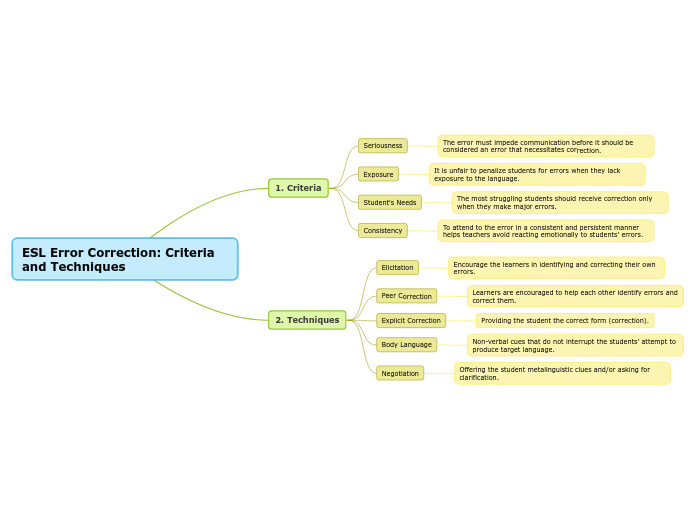ESL Error Correction: Criteria and Techniques
Criteria
Seriousness
The error must impede communication before it should be considered an error that necessitates correction.
Exposure
It is unfair to penalize students for errors when they lack exposure to the language.
Student's Needs
The most struggling students should receive correction only when they make major errors.
Consistency
To attend to the error in a consistent and persistent manner helps teachers avoid reacting emotionally to students' errors.
Techniques
Elicitation
Encourage the learners in identifying and correcting their own errors.
Peer Correction
Learners are encouraged to help each other identify errors and correct them.
Explicit Correction
Providing the student the correct form (correction).
Body Language
Non-verbal cues that do not interrupt the students' attempt to produce target language.
Negotiation
Offering the student metalinguistic clues and/or asking for clarification.
